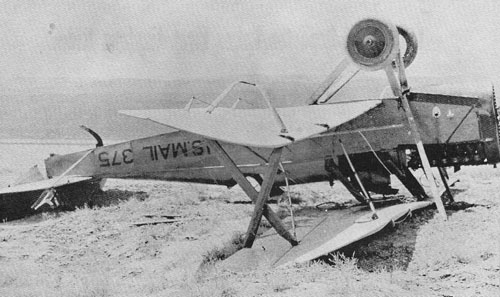
FOWL REPAIRS AND UNLIKELY HEROS - The first US Air Mail pilots


The extensive network of passenger and cargo airlines in the U.S. today is a direct result of the first airmail service during the mid-1920s. Former barnstormers and other intrepid pilots blazed the air trails and established routes carrying tons of mail. Soon travelers were wearing a parachute and sitting on top of mail pouches instead of taking a train. The transition from carrying mail bags to people was achieved by new governmental regulations, advancing technology in aviation, and a society bursting free of social constraints. It was the era of millionaires and flappers, inventors and adventurers.
Risky Business
It’s generally accepted that the U.S. Post Office’s (USPO’s) first official air mail delivery was on Sept. 23, 1911, when aviator Earle Ovington [1879-1936] carried a pouch of mail between two destinations, five miles apart on Long Island, N.Y. In his open cockpit monoplane, Ovington dropped a bag of mail onto a giant “X” painted in the short grass of Mineola’s airfield. The bag burst apart on impact, causing spectators to become impromptu postal clerks chasing envelopes. By 1918, a three-month experiment was commissioned by Congress to test the feasibility of air mail delivery. U.S. Army pilots in surplus Curtiss Jennys (JN4s) successfully flew short flights which convinced the USPO to accept mail delivered “by air.”
 Many Air Mail pilots (the term “airmail” was not yet common) were former barnstormers with experience landing in fields and on dirt roads across America. Unexpected weather, mechanical failures, and forced landings made good mechanics out of these air gypsies, who could replace an engine part, make an impromptu wood spar, wire a propeller together, or glue a patch onto torn fuselage fabric. Their daring flights sometimes cost them their lives. The ones that survived had exactly the type of experience needed to fly the mail.
Many Air Mail pilots (the term “airmail” was not yet common) were former barnstormers with experience landing in fields and on dirt roads across America. Unexpected weather, mechanical failures, and forced landings made good mechanics out of these air gypsies, who could replace an engine part, make an impromptu wood spar, wire a propeller together, or glue a patch onto torn fuselage fabric. Their daring flights sometimes cost them their lives. The ones that survived had exactly the type of experience needed to fly the mail.
During the 1960s, some of the original Air Mail pilots contributed their flying stories to Pre-Flight Air News, a small magazine featuring a column by Clifton P. “Ole” Oleson [1899-1969]. Before he flew the mail, Oleson was a barnstormer in Missouri and Nebraska. Oleson and his partner flew a Lincoln Standard (biplane) “with the wind” to save gas. Landing in a farmer’s field near Fall City, Neb., during 1924, they soon had customers lined up for a ride at five dollars each. On their third day, a major hail storm blew in just after Oleson had secured his Standard to a fence. “When the sun shone again our ship looked like an old back-stop for gunnery practice,” said Oleson. Hail had ripped more than 300 holes in the fabric and the fliers were hundreds of miles from a shop to buy materials to make repairs. Oleson had made kites as a kid using egg whites for glue, and quickly bought every egg and dish towel in the county from the incredulous farmers.
After fraying the edges of the cotton towels, Oleson then dunked them into a can of egg whites and smoothed them over the holes. “Many slimy patches later, we sat down for a smoke and let the warm sun finish the job,” recalled Oleson. The patches dried “tight as a drum” and Oleson safely flew his Standard to the next town. “An FAA inspector would have had a heart attack,” said Oleson, “But there warn’t no inspectors in them days, just two bird men who went flying with their own eggs.”
In 1918, congress appropriated $100,000 for use in establishing the first experimental air route in the U.S. Departing from Long Island, Army pilots arrived in Washington, D.C., flying surplus Curtis JN4 “Jennys” and were welcomed by President Woodrow Wilson and future President Franklin Roosevelt. At the end of its 220-mile journey, the mail was hand delivered by volunteer Boy Scouts. The schedule worked so well that it was transferred to the USPO by August (1918). Soon Jennys were replaced by more powerful DH4s (deHavilland). The web of air routes expanded in all directions until it reached coast to coast.
Although successful, the service was still not very profitable and in 1921, the USPO considered discontinuing the air mail. With pressure from business for overnight deliveries, the obvious answer for improvement in service was to keep aircraft flying after dark. At this time there were no airway beacons, landing lights, control towers or reliable scientific weather reports for pilots. Night flying was considered dangerous, and few planes had exterior or cockpit lights. A pilot’s standard equipment included road maps and a flashlight.
The Hero
In order to rescue their jobs and the future of Air Mail, one dozen pilots volunteered to prove to the USPO that they could fly the mail faster than train delivery. The experimental flights were scheduled on Feb. 22, 1921. A West-East team departed San Francisco, planning to refuel and transfer mail en route with a final destination of New York. The East-West team departed from Mineola, Long Island, N.Y., in the reverse direction with the destination of San Francisco. Both teams faced fog, rain, sleet, snow, high winds and freezing cold air. When the East-West relay team met disaster, the fate of Air Mail was left to the West-East pilots. Flying eastbound, pilot James H. “Jack” Knight [1893-1945] braved severe weather and took on extra segments for downed pilots. He became a national hero when his team delivered the mail in less than 34 hours, which was 65 hours faster than the best train delivery.
“Any of the guys could have done it,” Knight later remarked. He was probably right. Charles Lindbergh and Bud Gurney were also barnstormers who made the transition to carry the mail in Jennys or Lincoln Standards. The camaraderie of this exclusive club of fliers was so strong that after Lindbergh’s famous cross-Atlantic flight in 1927, he insisted on making one more mail run with his “Air Mail pilot chums,” whose company he so enjoyed.
The USPO resumed air mail service with funding for improved landing fields, equipment and a series of beacons situated every 25 miles across the U.S. to guide pilots at night.
In 1925, the U.S. Congress passed the Kelly Act which opened bidding for air mail routes to private business. Railroad and aircraft companies were now competitors on equal terms. Aviation immediately boomed and soon Air Mail service included passengers. “In 1928, carrying the mail under contract of the post office was the primary business of the 31 domestic airlines in regular operation,” writes aviation historian Ann Pellegreno. “In 1929, airmail accounted for 90 percent of revenue earned by air carriers, and without that income, many would have ceased operations.” During the 1930s, successful commercial airlines emerged including the “Big Four” – United, Eastern, TWA and American. “Carrying the mail had mandated the development of an air traffic systems, routes, suitable flying fields and better aircraft,” concludes Pellegreno. “All of these hastened the advent of passenger carrying on a large scale.”
 Giacinta Bradley Koontz is an aviation historian, magazine columnist and author. In 2008, she was awarded the National DAR History Medal and has appeared in documentaries on PBS and The History Channel. Learn more about her aviation history projects at www.harrietquimby.org.
Giacinta Bradley Koontz is an aviation historian, magazine columnist and author. In 2008, she was awarded the National DAR History Medal and has appeared in documentaries on PBS and The History Channel. Learn more about her aviation history projects at www.harrietquimby.org.
